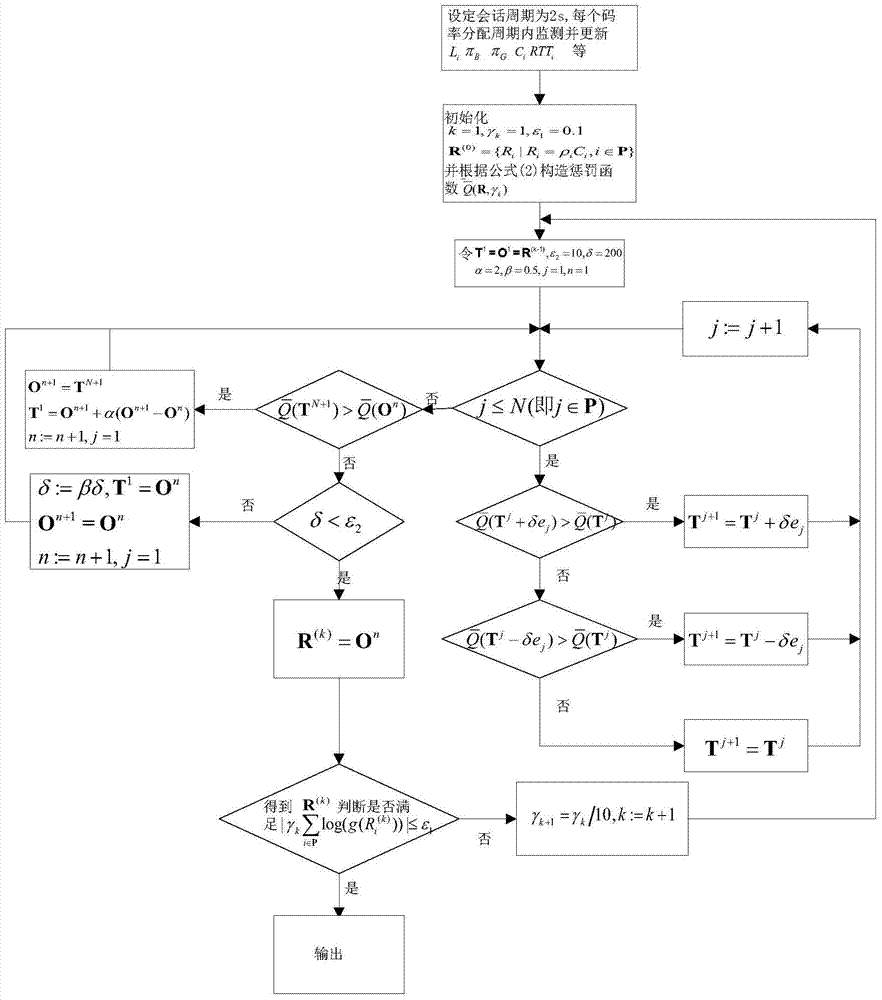User experience quality-oriented code rate allocation method
A bit rate allocation and quality of experience technology, applied in the field of bit rate allocation oriented to user experience quality, can solve problems such as failure to consider heterogeneous and time-varying characteristics, degradation of video quality at the receiving end, lack of QoE prediction model, etc., and achieve a wide range of The effects of practicality, peak signal-to-noise ratio improvement, and packet loss rate improvement
- Summary
- Abstract
- Description
- Claims
- Application Information
AI Technical Summary
Problems solved by technology
Method used
Image
Examples
Embodiment Construction
[0040] The present invention will be further described now in conjunction with accompanying drawing.
[0041] The present invention first proposes a new QoE prediction model to improve the user experience quality of different code rate allocation in the heterogeneous wireless access environment, and then models the code rate allocation problem of multi-channel video transmission in the heterogeneous wireless access environment as Constrained nonlinear optimization problems. In order to effectively solve this problem, the present invention introduces a relaxation function (also called a penalty function) and a pattern search method to obtain an approximately optimal code rate allocation scheme.
[0042] For ease of understanding, the application scenario of the present invention will be described first.
[0043] figure 2 It is a schematic diagram of multi-channel video transmission in a heterogeneous wireless access environment. In this application scenario, the communicatio...
PUM
 Login to View More
Login to View More Abstract
Description
Claims
Application Information
 Login to View More
Login to View More - R&D
- Intellectual Property
- Life Sciences
- Materials
- Tech Scout
- Unparalleled Data Quality
- Higher Quality Content
- 60% Fewer Hallucinations
Browse by: Latest US Patents, China's latest patents, Technical Efficacy Thesaurus, Application Domain, Technology Topic, Popular Technical Reports.
© 2025 PatSnap. All rights reserved.Legal|Privacy policy|Modern Slavery Act Transparency Statement|Sitemap|About US| Contact US: help@patsnap.com



